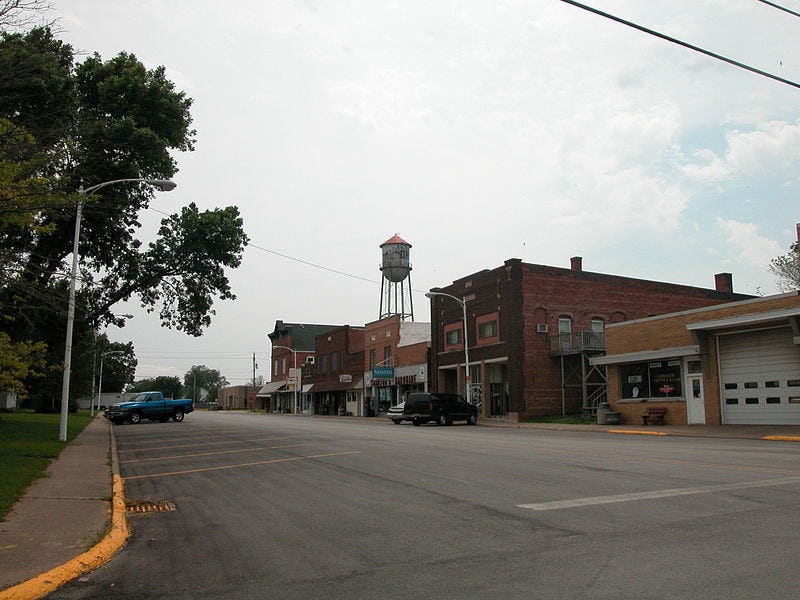National Rankings of Beauty by County Are Painfully Accurate at the Bottom
Three thousand counties in this country. I grew up on the wrong end.

There’s a sign off Illinois’ Route 150 when you hit Orion pop. 1,847, promising: “A Great Hometown!” Even in elementary school I knew the sign was a hateful lie so demonstrably fraudulent it made me doubt the very concept of “towns” on this quantum level of reality. Today, thanks to the federal government, I have proof. The Washington Post just informed me that I grew up in one of the ugliest places in America. Normally these rankings are totally arbitrary, but sure, their story checks out.
According to a map of all of America’s counties ranked by scenery and climate, Henry County, Ill. ranks 2994th out of 3,111 for the most desirable places to live in America. At the top of the list is Ventura Count, California. Today — after bouncing through parts of Illinois, Kansas City, and Brooklyn — I reside in Scott County, Iowa, which is the 2,735th ugliest place in the country. This is progress, of a sort.
I would show you exactly what I’m talking about if I could, but here’s what I get when I plug the since-sold homestead into Google Street View: “No images available at this time.” Even the digital Eye of Sauron turns away in shame at its grotesquerie of that fizzing shit crater.
I mean that in the literal sense. The place was surrounded by hog fields and basically indented land-wise, so instead of being this fun break from school, summers were a totalitarian death march across scorching black top as microscopic bits of roasting pig feces matriculated in your nostrils. If you were lucky some kid’s parents let you play Mario Kart in the basement until you could crawl back into bed and pray for the void. This is the thing about living in a place that doesn’t have much going for it in the looks department: There’s not much penalty for spoiling it. Putting a hog lagoon here carries the same heft of a species of slug going extinct. Yeahbutwhatayagonnado?
Anyway, The Post tells me its rankings were based on measures of climate, topography, and water area. Mild and sunny winters scored you points, as did temperate summers and low humidity, varying topography, and access to a body of water. Yeah, we didn’t have any of that. It was a desert. You had to drive 30 miles if you wanted to rent a movie that didn’t star Jesus. That town shouldn’t even be on a map of the U.S., just a big black square on the edge of west Illinois.
There was one benefit: I promised myself I wouldn’t die there. It goes one of two ways. You open the door to your house one morning and look at the dust of this planet and collapse on yourself like a dying sun before puberty, or you do what you can to drag yourself out. It’s like you’re stuck in that pipe of raw sewage with Andy Dufresne at the end of the Shawshank Redemption and you just have to keep going and trust that there’s a light at the end of this excrement and that Morgan Freeman is waiting for you in Mexico or else you die with your lungs teeming with farm runoff. Get busy living or get busy dying.
Because yeah, you can give me that line about how beauty is subjective, but you know what happens to a landlocked county with no water source, mountains, or any of the other landmarks the federal rankings use? Nobody wants to live there. Nobody wants to build there. Which means there’s no tax base to make the place any better, so no jobs. Plus the constant reinforcement by isolation that you’re growing up in undesirable territory and the accompanying anxiety that goes along with that: this weird distrust of outsiders that turns bitter in the older generations. If they don’t start out true, the stereotypes set about reinforcing themselves pretty quickly.
I suppose it could’ve been worse. I could’ve grown up in Red Lake County, Minnesota. I haven’t been, myself, but I can only assume it’s flat and could really use a river or two.